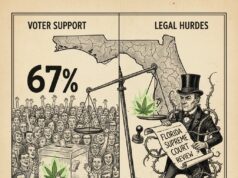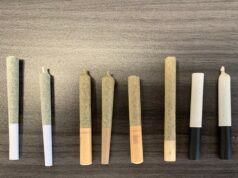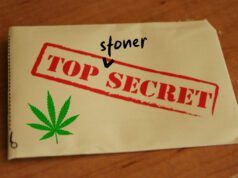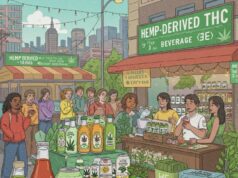Head shops are a curious phenomenon left over from the prohibition era of marijuana, long before cannabis started getting legalized in North America. Some still exist in shopping centers and malls today, but they’re fading away and being replaced by the modern weed dispensary. Head shops are the epitome of the Baby Boomer generation, but they represent a very clear influence on modern stoner culture.
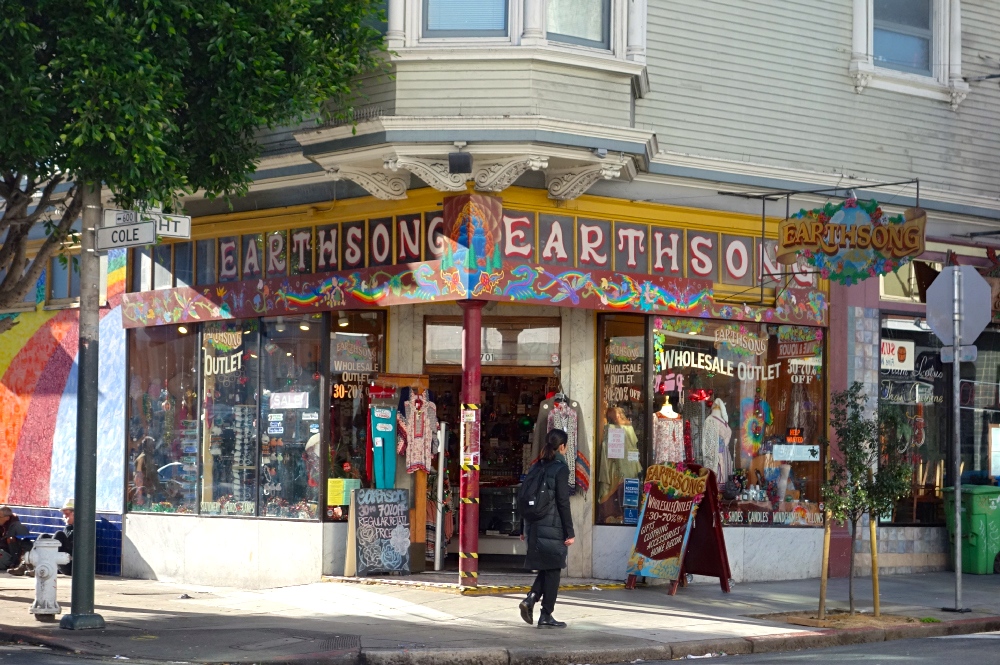
What’s the deal with head shops?
Head shops are found all around the world wherever tourists frequent, but they truly got started in the 1960s in North America, from their roots in hippie culture. During this time, marijuana was strictly prohibited along with other drugs, so even though there was demand for retail stores to support drug culture, they could not come right out and say they were stores for druggies. Instead they used coded signals and subterfuges still recognized today as being closely associated with recreational chemical usage. Among the many aspects of head shop storefronts to cloak their true purpose, they would purport:
- Psychedelic culture – Most especially music, and most especially the Grateful Dead.
- Underground / counter-culture – A lot of it adult-oriented, so some stores went full “sex / porn shop,” while others became mainstays of underground comix, politically-themed merchandise, intellectual books by the likes of Timothy Leary and Robert Anton Wilson, and so on.
- Wellness / alternative medicine – Lots of aromatherapy merchandise, herbal tinctures, all-natural health foods, and essential oils paraphernalia.
- Alternative religion – Be it Rastafarianism, Buddhism, or other Eastern religions. Lots of incense for meditation, figures and posters of exotic deities, magic rocks, UFO and pyramid power books, Wiccan and Pagan merchandise, etc.
- Arts and crafts – Even if you never touched drugs, you could often count on your local head shop to stock day-glo poster paints, tie-dye Tshirt kits, macrame, or clay statues you could paint. This extended to people with an interest in “houseplants” and growing herbs for cooking, natural remedy, or religious ritual.
- Tattoos and piercing – There was usually a studio right next door.
- Tobacco – Of course, anything legal you could smoke would be a purported purpose as well.
That last one has become a cultural in-joke. Every head shop had a big display case full of smoking paraphernalia and a sign “for tobacco use only.”
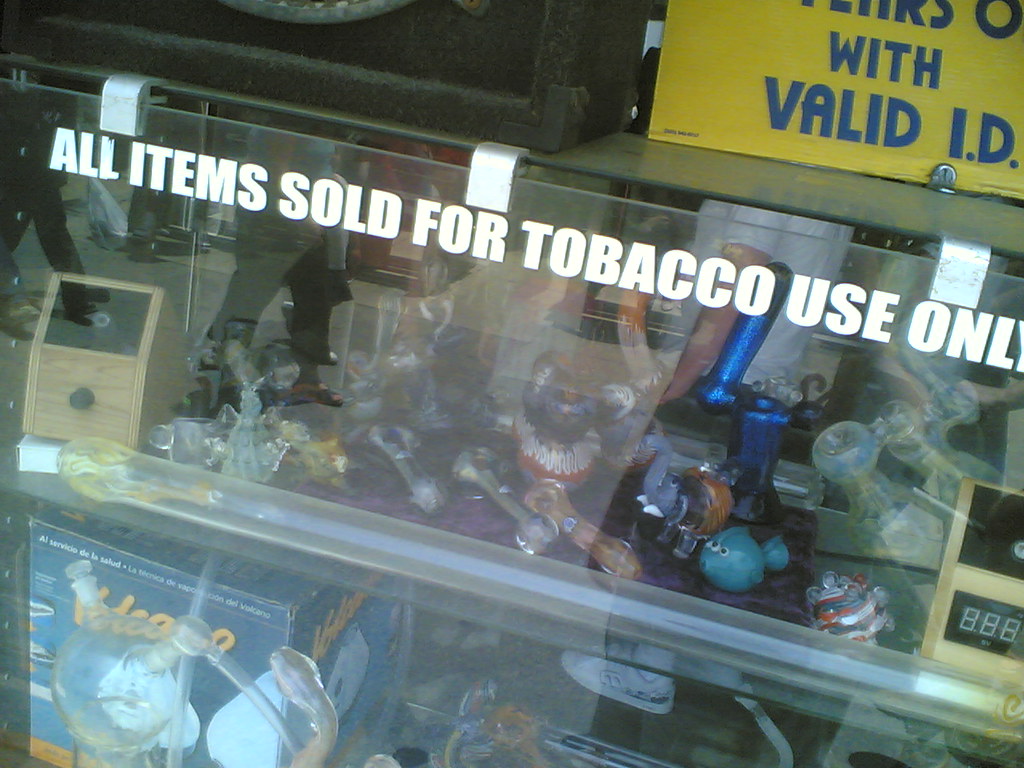
My goodness, of course! What, did you think anybody was suggesting you smoke some weed or something?
Head Shops arose out of the need to disguise drug paraphernalia
It was all one big disguise. The pipes were for smoking pot, the water pipes and hookahs were for smoking pot, and the rolling papers were for smoking pot. The incense and aromatherapy was for covering up the smell of pot, and the tie-dye Tshirts and Grateful Dead bumper stickers were for signaling to other stoners that you smoke pot. The planters and indoor herbal seed kits for “growing your own spice garden” were for growing pot.
Not only this, but since all drugs were lumped together as equally illegal, there was plenty of support for the indulgence of other chemicals. Thus, there might be glass tubes used for smoking crack, tin foil chutes for vaping meth, needles sold as “piercing supplies,” balloons sold as “decorative party supplies,” little mirrors for “make-up,” razor blades in the “arts and crafts” section, and urine-cleaning kits behind the counter in case you needed a very clean sample of pee for some reason.
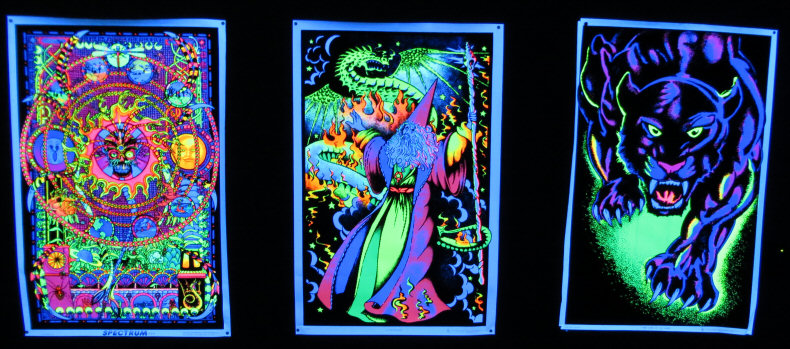
Hey, they sold digital scales behind the counter too. But if anybody asks, they’re for weighing tobacco, or measuring small amounts of sage for Wiccan rituals, or whatnot. The baggies? Yes, the baggies are for storing your beads in when you’re doing macrame. The blacklights have nothing to do with the fact that cocaine glows under ultraviolet light and thus blacklights can be used to assess purity. We just so happen to sell blacklight posters and they look so cool!
Everything had its own little story.
None of this would be illegal to sell by itself. The First Amendment, for instance, guarantees you the right in the United States to freely distribute information of any kind, including magazines about growing marijuana. It also means the government can’t stop you from practicing a religion that involves burning something that makes funny-smelling smoke. In places where drug paraphernalia was more strictly prohibited, head shops just worked harder to disguise it:

Aw, what a sweet romantic gesture, a flower preserved in a glass tube! Which you could remove, throw away, and end up with a handy lighter-friendly piece of glass with a convenient hole to drop a rock in one end and a smokeable stem on the other. Just another big lie.
Just don’t say “drugs” or refer to them. You would get thrown out of most places. For one thing, the local vice squad had plainclothes cops dropping by all the time. But, if you frequented the store a few times, and the clerks got to know you and knew that you were “cool,” then after you had exchanged enough hints and winks and got around to asking if they knew anywhere you could buy actual drugs… Why yes, of course, the clerk always “knew a guy.” If you were lucky, you weren’t asking at a store actually run by the vice squad.
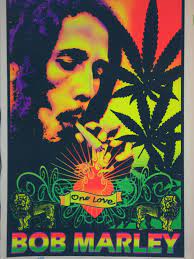
Head Shops leave an indelible mark on stoner culture today
The cultural markers left over from the Baby Boomers, hippies, and their head shops are very present in modern day cannabis culture. Some of it for better; some of it for worse.
There are, for instance, plenty of musicians and other artists who have been open drug advocates, including Bob Marley, Willie Nelson, Grateful Dead, The Beatles, Snoop Dogg, and others. Cheech and Chong (actors and stage comedians Cheech Marin and Tommy Chong) are the epitome of Boomer stoner culture. But generations of head shops plastering a big Bob Marley poster in the window have created some confusion. People now assume that just because you smoke pot, that must mean that you’re really into psychedelic art and reggae music. The art was there as a coded signal for “drug culture,” not because drug culture gravitated towards these artists.
Similarly, the association with alternative religion has rubbed many a devotee the wrong way. Head shops misappropriated many religions as a subterfuge for cannabis fanciers, but these religion’s adherents don’t always appreciate their belief symbols being plastered on rolling papers and bongs. Buddhism in particular is nearly as anti-drug as American Mormonism. Even Rastafarians, which believe cannabis to be a gift from God, specify that cannabis is only to be used in spiritual communion with God, not just to get high and party. Likewise, believers of Wiccan and Pagan religions get a little miffed at being dragged into this whole marijuana thing, but then they’ve been culturally co-opted in everything from Halloween costumes to Christian Christmas rituals, so they kind of shrug and deal with it.
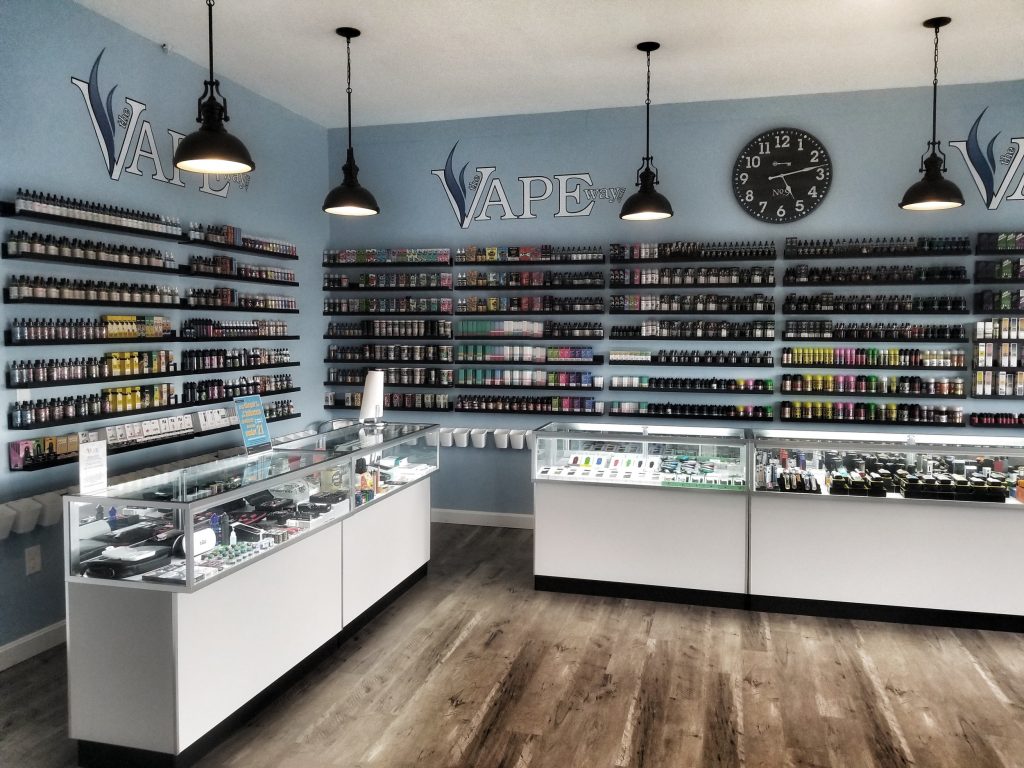
Cannabis culture is now separating itself from Boomer trappings
Today, cannabis accessories are more commonly found in dispensaries and online retailers in legal states, who can finally sell them over the counter with no pretensions. Even in still-illegal or only partially legalized states, cannabis has an entry point as therapy and medicine, so there’s a pharmacy association rather than a psychedelic one. There’s also a strong association with tobacco vaping, so again you’re more likely to find a vape shop that sells a few items obviously not for vaping tobacco juice, but again missing the Bob Marley posters and Grateful Dead stickers.
As for younger generations, they can not flee Boomer culture fast enough. Nothing dates you more in cannabis culture than wearing a tie-dye shirt or quoting lines from Cheech and Chong. Millennials and Generation Z have pulled cannabis right out of the ’60s into the modern day, while even Generation X, with its brief fling with rave culture, pretends that never happened now.
Head shops may soon become the Boomer museums of the future. It’s certainly a colorful, psychedelic time, but one we thankfully can leave behind as we can start being honest about our interests.



